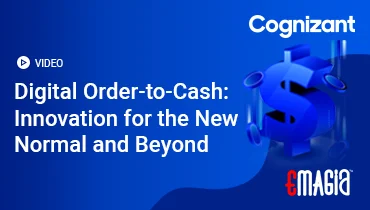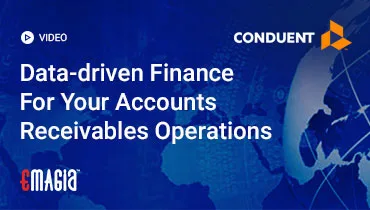The accounts payable (AP) function is far more than just paying bills. It is the lifeblood of a company’s financial operations, a strategic lever that directly influences cash flow, profitability, and critical vendor relationships. A well-managed AP process ensures that a business remains solvent, maintains its reputation, and capitalizes on opportunities for cost savings. Conversely, an inefficient or disorganized system can lead to costly errors, fraud, and a strained relationship with suppliers.
In the modern business landscape, the traditional paper-based approach to managing payables is no longer sufficient. Organizations are increasingly looking for ways to streamline their operations, reduce manual errors, and gain greater visibility into their financial health. This comprehensive guide will walk you through the foundational principles, best practices, and technological solutions necessary to build an accounts payable process that is not only effective but also a strategic asset for your business.
The Foundational Principles of Accounts Payable Management
Before diving into the specifics, it’s essential to understand the core mission of accounts payable management. It’s the process that manages all of a company’s financial obligations to its suppliers and vendors. This includes everything from receiving invoices and verifying their accuracy to securing approvals and executing payments. A successful system operates on a few key principles:
- Accuracy: The process must ensure that every payment made is correct, authorized, and properly recorded. Even a small error can ripple through the financial statements.
- Efficiency: An efficient AP process minimizes the time and resources spent on routine tasks, allowing your team to focus on more strategic activities like fraud prevention and cash flow optimization.
- Compliance: All transactions must adhere to internal controls, regulatory requirements, and tax laws. A strong audit trail is non-negotiable for proving compliance.
- Vendor Relations: Timely and accurate payments are the foundation of strong supplier relationships. Maintaining this goodwill can lead to better terms, discounts, and a more reliable supply chain.
Embracing these principles is the first step toward transforming your AP department from a cost center into a value driver.
The End-to-End Accounts Payable Process: A Step-by-Step Guide
To effectively manage payables, you must first understand the full lifecycle of a vendor invoice. While the specifics may vary by organization, the core steps remain consistent. An optimized process flows smoothly from the moment an invoice is received until the payment is reconciled.
Invoice Capture: The Starting Point of the Accounts Payable Workflow
The process begins when an invoice arrives. In a manual system, this could be a physical piece of paper, an email attachment, or even a fax. The first step, invoice capture, involves receiving this document and entering its data into your accounting system.
Historically, this has been a labor-intensive process. An employee would manually key in data such as the vendor name, invoice number, due date, and line-item details. This is not only time-consuming but also highly susceptible to human error. A simple typo can lead to a duplicate payment, a payment to the wrong vendor, or an incorrect amount being paid. The inefficiencies here are compounded by the various formats and channels through which invoices arrive, making it difficult to centralize and standardize the initial data entry.
To combat these issues, many businesses are moving toward digital solutions. Technologies like Optical Character Recognition (OCR) and Artificial Intelligence (AI) can automatically scan and extract key data from invoices, regardless of their format. This significantly reduces manual data entry, improves accuracy, and accelerates the entire process.
Purchase Order Matching and Verification
Once the invoice data is captured, it needs to be verified. This is where purchase order (PO) matching comes into play. The most common method is three-way matching, which compares three key documents:
- The Invoice: The bill from the vendor.
- The Purchase Order (PO): The internal document created to authorize the purchase.
- The Receiving Report: The document confirming that the goods or services were actually received.
This process is a critical internal control mechanism. By ensuring that the invoice amount matches what was ordered and what was received, you can prevent overpayments, catch billing errors, and protect against fraudulent invoices. In a manual environment, this involves a lot of physical document handling and cross-referencing, which can create significant bottlenecks. An automated system can perform this matching almost instantly, flagging any discrepancies for human review and approval.
Invoice Approval Workflows: Securing Authorization
After the invoice has been verified, it must be approved for payment. This step is often a major source of delays. In a traditional setting, an invoice might be physically routed from one department head to another for approval. It could sit on a desk for days, or even weeks, especially in a large organization or with remote teams. These delays can cause you to miss out on early payment discounts or, worse, incur late fees.
A modern, effective AP system uses automated approval workflows. These digital workflows route invoices to the correct approver based on pre-defined rules, such as the invoice amount or department. Approvers can review and approve invoices from any device, and the system maintains a clear, digital audit trail of every action. This not only speeds up the process but also enhances accountability and visibility.
Payment Execution: Making the Payment
With the invoice approved, the final step is to execute the payment. Manual processes typically involve printing paper checks, which is a slow and costly method. It requires an employee to print the check, an authorized signatory to sign it, and another to mail it. This process is not only inefficient but also increases the risk of fraud, as checks are a prime target for theft and manipulation.
Modern AP departments are transitioning to electronic payment methods like ACH, virtual credit cards, and other e-payment solutions. These methods are faster, more secure, and provide a clear digital record of the transaction. An automated system can schedule these payments to align with your cash flow needs, ensuring payments are made on time but not too early.
Reconciliation and Reporting: Closing the Loop
The final stage of the process involves reconciling the payment with the invoice and the general ledger. This ensures that the books are balanced and that all transactions are accurately recorded. A well-designed AP system will automate this reconciliation process, providing real-time visibility into your financial position and making it easy to generate reports for audits or business analysis.
Tackling Common Accounts Payable Challenges
Many businesses struggle with their accounts payable process, often due to a reliance on outdated, manual methods. Recognizing these common challenges is the first step toward finding effective solutions.
The Problem of Manual Data Entry and Human Error
Manually entering invoice data is a primary source of headaches. It is slow, tedious, and prone to mistakes. A misspelled vendor name, an incorrect invoice number, or a transposed amount can lead to a host of problems, from duplicate payments to frustrated suppliers and inaccurate financial reporting. This challenge is magnified by high invoice volumes, where the sheer amount of repetitive work can overwhelm even the most diligent team.
Lack of Visibility and Control
In a paper-based system, it can be nearly impossible to know the real-time status of an invoice. Where is it in the approval process? Who has it? Has it been paid? This lack of visibility creates a “black hole” in the AP workflow, leading to delays and missed deadlines. Without a clear overview, it’s difficult to identify bottlenecks or make informed decisions about cash flow.
The High Cost of the Accounts Payable Process
Processing a single invoice manually can be surprisingly expensive. The costs include labor, paper, printing, postage, and physical storage. When you factor in the financial penalties from late payments and the lost opportunities from missed early payment discounts, the total cost can become a significant drain on resources.
Accounts Payable Fraud: A Pervasive Threat
The accounts payable department is a prime target for both internal and external fraud. Invoices can be fabricated, vendor information can be altered, and checks can be intercepted. Without strong internal controls and a clear audit trail, detecting and preventing fraud can be a major challenge.
Difficulty Adapting to Growth (Scalability)
A manual AP process simply doesn’t scale. As a business grows and invoice volume increases, the only way to keep up is to hire more people. This is not a sustainable or cost-effective solution. A system that cannot handle increased transaction volumes without a proportional increase in headcount is a liability that will hold the business back.
Accounts Payable Best Practices for a High-Performing Department
The good news is that these challenges can be overcome by implementing a set of modern best practices. These are the strategies that leading businesses use to create an agile, efficient, and strategic AP function.
Centralize and Standardize Your Entire Accounts Payable Process
The first step is to create a single, centralized system for your AP workflow. This means all invoices, regardless of their source, are routed to a single location for processing. A centralized system provides a single point of contact for vendors, improves communication, and ensures that every invoice goes through a standardized approval and payment process. This consistency is key to reducing errors and increasing visibility.
Implement Automated Invoice Processing and Workflows
Automation is arguably the most impactful best practice. An automated AP solution can take over repetitive, manual tasks, freeing your team to focus on higher-value activities. This includes:
- Automated invoice capture using OCR technology.
- Automatic three-way matching to instantly verify invoices against POs and receiving reports.
- Digital approval workflows that automatically route invoices to the right approvers.
- Electronic payment execution to eliminate the costs and risks associated with paper checks.
By embracing automation, you can drastically reduce processing times, lower costs, and all but eliminate human error.
Strengthen Vendor Relationships
Your suppliers are partners in your success. Managing accounts payable effectively involves nurturing these relationships. This means:
- Paying invoices on time to avoid late fees and maintain a positive reputation.
- Communicating proactively with vendors about payment statuses or any issues with invoices.
- Negotiating favorable payment terms, such as early payment discounts, that can benefit your cash flow.
A strong relationship can even lead to better terms and priority service from your most important vendors.
Leveraging Technology: The Power of Accounts Payable Automation
In today’s competitive market, technology is not just an option—it’s a necessity for an efficient and secure accounts payable department. AP automation software is a powerful tool that transforms manual, paper-based processes into a seamless digital workflow.
The core of modern AP automation is the use of intelligent technologies. Optical Character Recognition (OCR) is a foundational component, allowing the system to “read” data from invoices and instantly digitize it. This eliminates the need for manual data entry, which is the leading cause of errors. Beyond simple data extraction, many solutions use Artificial Intelligence (AI) and Machine Learning (ML) to perform advanced tasks.
For example, AI can automatically code invoices to the correct general ledger accounts by learning from historical data. It can also detect anomalies and potential fraud by flagging invoices with unusual amounts, vendor names, or duplicate entries. This “hands-free” processing of routine invoices frees up your team to focus on resolving exceptions and managing strategic projects.
Furthermore, AP automation provides real-time visibility into the entire payment process. A central dashboard allows you to see the status of every invoice, who has it, and when it is due. This transparency helps you manage cash flow more effectively, ensure compliance, and make data-driven decisions. The return on investment (ROI) for such a system is often significant, realized through reduced labor costs, cost savings from early payment discounts, and a decrease in fraud-related losses.
Protecting Your Business: Strategies for Accounts Payable Fraud Prevention
Accounts payable fraud is a serious threat to a business’s financial health. An effective management strategy must include robust measures to detect and prevent it.
Implement Strong Internal Controls and Segregation of Duties
The most fundamental principle of fraud prevention is to separate key responsibilities. The same person should not be able to receive an invoice, approve it, and execute the payment. By segregating these duties, you create a system of checks and balances where no single employee has complete control over the entire process. This makes it much more difficult for fraudulent activity to go undetected.
Regular Audits and Monitoring
Proactive monitoring is your best defense. Regular audits of vendor master files can help you catch duplicate vendors or suspicious changes to banking information. Monitoring key metrics and looking for anomalies—such as an unusually high number of invoices from a single vendor or payments made to inactive accounts—can also reveal signs of fraud. An automated system can make this process easier by flagging these red flags in real-time.
Employee Training and Awareness
Your employees are on the front line of defense against fraud. Training your team to recognize the signs of phishing attempts, social engineering schemes, and other fraudulent activities is crucial. A simple policy requiring verbal verification of any change in vendor payment information can prevent many common fraud schemes.
Measuring Success: Key Performance Indicators (KPIs) for Accounts Payable
You can’t manage what you don’t measure. A high-performing AP department tracks and analyzes key metrics to identify areas for improvement and demonstrate its value to the organization.
- Average Cost Per Invoice: This metric measures the total cost of processing a single invoice, including labor, software, and overhead. A lower cost indicates a more efficient process.
- Invoice Processing Time (Cycle Time): This tracks the average time it takes for an invoice to go from receipt to payment. A shorter cycle time means a faster and more efficient process, which can lead to better vendor relations and the ability to capture early payment discounts.
- Days Payable Outstanding (DPO): DPO indicates the average number of days it takes a company to pay its suppliers. A well-managed DPO is a balancing act between paying on time and holding onto cash as long as possible to improve working capital.
- Early Payment Discounts Captured: This KPI measures the percentage of available early payment discounts that your business actually takes advantage of. It’s a direct indicator of money saved.
- Invoice Exception Rate: This is the percentage of invoices that require human intervention to resolve a discrepancy or error. A high exception rate signals inefficiencies and potential problems in your process.
By regularly tracking and analyzing these KPIs, you can gain a clear understanding of your AP department’s performance and make data-driven decisions to optimize your financial operations.
How to Enhance Accounts Payable Management Through Automation
The need for modern solutions has never been more urgent. As businesses grow and globalize, the volume and complexity of invoices can quickly overwhelm manual processes, leading to increased costs, higher error rates, and greater fraud risk. This is where a dedicated AP automation solution becomes a game-changer.
A robust automation platform can orchestrate the entire AP workflow from beginning to end. It serves as a central hub where all invoices, whether received via email, a supplier portal, or a physical scan, are automatically captured and digitized. Using advanced AI and machine learning, these platforms intelligently extract data, validate it against existing purchase orders, and automatically route invoices through a pre-defined approval chain. This removes the bottlenecks and guesswork of traditional methods, ensuring a seamless flow.
Furthermore, these solutions offer enhanced security features that are difficult to achieve with manual processes. They can detect duplicate invoices, flag suspicious payment requests, and provide a comprehensive audit trail that is tamper-proof. For businesses concerned with cash flow, an automation platform can optimize payment timing to ensure invoices are paid on the due date, allowing a company to hold onto its capital for as long as possible without incurring late fees. The integration with a company’s Enterprise Resource Planning (ERP) or accounting system is also seamless, ensuring that all financial data is synchronized and accurate across the organization.
How a Specialized AP Automation Platform Can Help
In the complex world of financial operations, having a reliable partner is essential. Modern AP automation solutions are designed to address the specific pain points of managing accounts payable. By leveraging advanced technologies like AI, machine learning, and robotic process automation (RPA), these platforms can help businesses of all sizes unlock new levels of efficiency and strategic advantage.
A leading platform can automate invoice processing from the moment an invoice arrives, using intelligent data capture to digitize information and eliminate manual data entry errors. It can then automate the three-way matching process, instantly verifying invoices against purchase orders and receiving reports to prevent fraud and ensure accuracy. Its dynamic, AI-powered approval workflows can route invoices to the correct approvers, reducing cycle times and ensuring compliance with internal policies. Furthermore, such a platform offers comprehensive dashboards and reporting tools, giving your team real-time visibility into cash flow, vendor spend, and key performance indicators. This empowers your AP department to move beyond simple data entry and become a strategic advisor to the business. By choosing a solution that is scalable and integrates seamlessly with your existing systems, you can ensure that your accounts payable function is prepared for future growth and equipped to handle the challenges of a dynamic business environment.
FAQs: Common Questions About Accounts Payable Management
What is accounts payable?
Accounts payable (AP) is the money a company owes to its vendors and suppliers for goods and services purchased on credit. It is listed as a current liability on the balance sheet.
Is accounts payable a liability?
Yes, accounts payable is a current liability. It represents a short-term debt that a company is obligated to pay to its creditors within a specific timeframe, usually within a year.
What is the difference between accounts payable and accounts receivable?
Accounts payable is the money a business owes to others. Accounts receivable is the money owed to the business by its customers. AP is a liability, while AR is an asset.
What is three-way matching in accounts payable?
Three-way matching is a crucial internal control process where an invoice is matched with a purchase order and a receiving report to ensure that all details align before a payment is issued. This helps prevent fraud and errors.
What are the biggest challenges with accounts payable?
Common challenges include reliance on manual data entry, lack of visibility into the process, high operational costs, fraud risk, and difficulty scaling the process to accommodate business growth.
What are the benefits of accounts payable automation?
The benefits include significant time and cost savings, reduced human error, improved cash flow management, enhanced fraud detection, better vendor relationships, and a more streamlined and efficient workflow.
What is the P2P cycle?
The P2P cycle, or Procure-to-Pay cycle, is the end-to-end process that begins with the procurement of goods or services and ends with the payment to the vendor. The accounts payable process is a major part of the P2P cycle.
What is a non-PO invoice?
A non-PO (Purchase Order) invoice is an invoice that is not tied to a formal purchase order. These invoices often require a different approval workflow, typically based on department budgets or specific manager authorization.
How can I prevent accounts payable fraud?
To prevent fraud, you should implement strong internal controls and segregation of duties, conduct regular audits, use automated systems with built-in fraud detection capabilities, and train your employees to spot warning signs.
How do I measure accounts payable performance?
You can measure performance using key metrics like average cost per invoice, invoice processing time, Days Payable Outstanding (DPO), and the percentage of early payment discounts captured.



